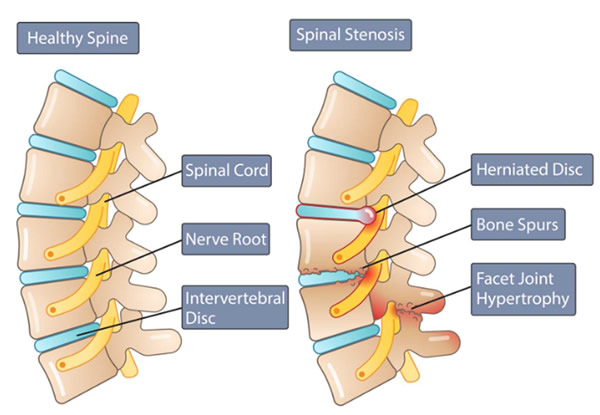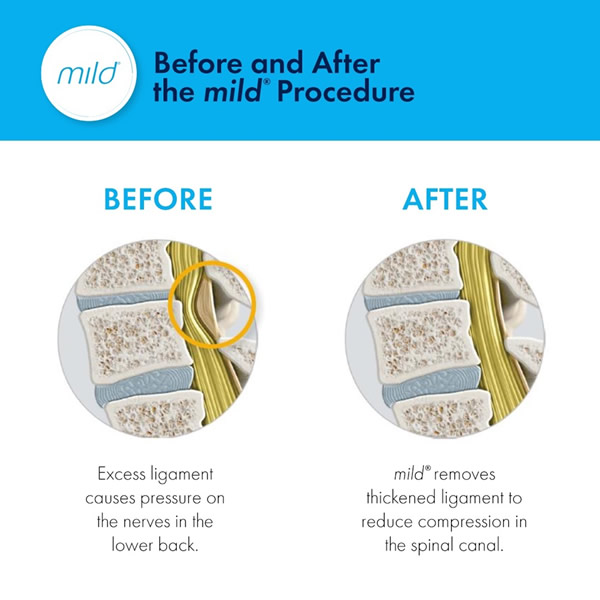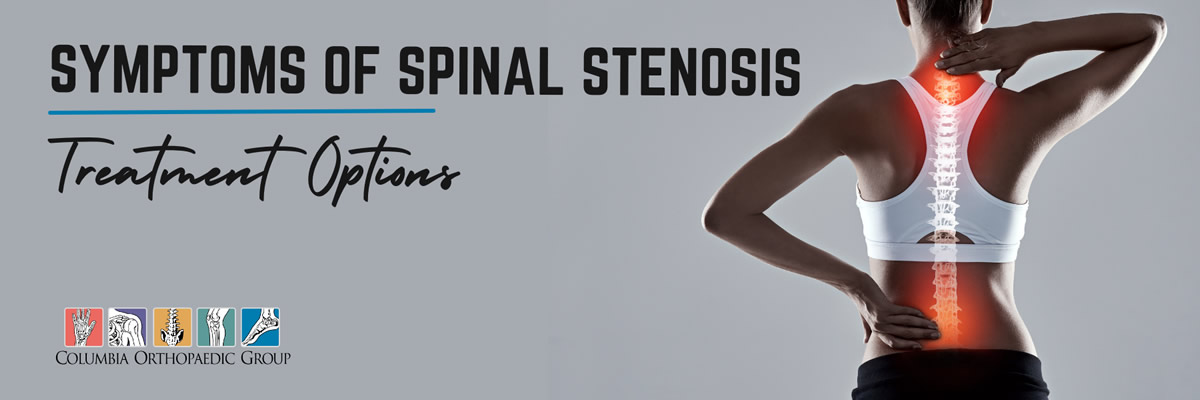What is Lumbar Spinal Stenosis?
As we age, our spine changes. The effects of normal wear and tear from aging can lead to a narrowing of the spinal cord canal (spinal canal). This condition is called spinal stenosis and when it develops in the lower back, it is called lumbar spinal stenosis (LSS).
If you have lumbar spinal stenosis, you may have trouble walking distances or find that you need to lean forward to relieve pressure on your lower back. You may also have pain or numbness in your legs. In more severe cases, you may have difficulty controlling your bowel and bladder. There is no cure for lumbar spinal stenosis, but you have many treatment choices.
 Symptoms Include:
Symptoms Include:
- Pain or numbness in the lower back when standing upright
- Pain, numbness, heaviness or tingling in upper legs or buttocks when walking
- Pain when lying down that may be relieved by curling into the fetal position
Those with lumbar spinal stenosis may experience temporary relief when bending forward while sitting or standing as pressure on the spinal cord is released and space in the spinal canal is "opened." Common actions to relieve your pain may include sitting in a chair, leaning over a shopping cart, or using a walker or cane.
One common misconception is that back pain is part of aging and cannot be avoided or treated. However, it's helpful to know, there are specialized interventional pain doctors who are trained to help patients find long term relief from chronic back pain, like that associated with lumbar spinal stenosis. So, rather than avoiding exercise and activity that trigger your back pain, it is encouraged that you schedule an appointment with a doctor who can help.
How is lumbar spinal stenosis diagnosed?
To diagnose lumbar spinal stenosis, your healthcare provider will ask you questions about your symptoms and do a complete physical exam. During the physical exam your healthcare provider will look for signs of spinal stenosis, such as loss of sensation, weakness, and abnormal reflexes.
These tests help make a diagnosis:
- X-rays of your lumbar spine. These may show bone growths called spurs that push on spinal nerves and/or narrowing of the spinal canal.
- Imaging tests. A CT scan or MRI scan can give a more detailed look at the spinal canal and nerve structures.
- Other studies. Your healthcare provider might order a bone scan, myelogram (a CT taken after injecting dye), and EMG (an electrical test of muscle activity).
> Take the mild® survey to see if it might be right for you.
Treatment Options
 Up until recently ,lumbar spinal stenosis has been treated with a variety of conservative (pain medications, physical therapy, epidural spinal injections) and invasive (surgical decompression) options. Today, several minimally invasive procedures have expanded the treatment options such as the mild® Procedure.
Up until recently ,lumbar spinal stenosis has been treated with a variety of conservative (pain medications, physical therapy, epidural spinal injections) and invasive (surgical decompression) options. Today, several minimally invasive procedures have expanded the treatment options such as the mild® Procedure.
- Pain Medication -The first course of action may be conservative treatments like over-the-counter pain medication, physical therapy or chiropractic care. While their safety profile may be low, these treatments aren't always effective for everyone.
- Epidural Steroid Injections - If the pain is still present, your doctor may recommend an epidural steroid injection (ESI). These injections typically bring relief, but often, that relief is only temporary. If long-term relief doesn't come after your initial ESI, consider the mild® Procedure as your next step.
- The mild® Procedure - A safe outpatient back surgery procedure that can help patients diagnosed with lumbar spinal stenosis (LSS) stand longer and walk farther with less pain. It is a short, outpatient procedure, performed through a very small 5.1 mm incision (about the size of a baby aspirin) that requires no general anesthesia, no implants, and no stitches. The Mild® procedure is an alternative for patients who may not tolerate a more invasive procedure. The mild® Procedure does not affect surgical options for the few patients who do not respond to this treatment. Because of the very minimally invasive approach and targeted subtle decompression, there is minimal or no scar tissue that would increase the risk of possible future open spine surgery. Also, keep in mind that patients undergoing open surgical decompression are no longer candidates for less invasive approaches such as the mild® Procedure.
How mild® Works?
The mild® procedure has been performed safely on thousands of patients. Doctors who are certified to perform mild® will use an imaging machine and specialized tools to remove small pieces of bone and excess ligament tissue through a tiny incision in your back. Removing these elements restores space in the spinal canal and decreases the compression of the nerves, which reduces pain and restores mobility. Some doctors have described the goal of the procedure as being similar to "removing a kink in a drinking straw" in order to restore adequate blood flow to the spine.
Click the video below to learn how mild® can help you stand longer and walk farther with less pain.
Patient Stories
There may be a cause of low back pain that millions of people aren't aware of and that is going undiagnosed. Hear what patients have to say, by playing the video to learn about how the mild® procedure can get you back to doing the things that you love!
What's Next? Treatment Options...
To find out more about treatment options and specialized care, please call Columbia Orthopaedic Group at (573) 876-8413 and schedule an appointment or request one below:
Request an AppointmentWe look forward to meeting you!
Columbia Orthopaedic Group
1 South Keene Street
Columbia, Missouri 65201
Have Questions?
During your initial consultation, you will have the opportunity to meet our team, learn about our services, and discuss potential treatment options best suited for your needs.

